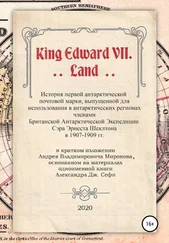Prince Eddy returned from a trip to India in 1890 worn out and ‘really quite ill’ from the dissipated life he had been leading. Then, to compound his folly, he fell in love with Princess Hélène d’Orléans, who was not only a Roman Catholic but daughter of the Comte de Paris, a pretender to the French throne. Before falling in love with her, Prince Eddy — or the Duke of Clarence and Avondale as he became in May 1890 — had wanted to marry Princess Alix of Hesse, but she would not consider him. He had then been asked to think about another cousin, Princess Margaret of Prussia, but he declined to consider her.
Princess Alexandra was naturally not disappointed that neither of these German marriages materialized. On the other hand she liked Princess Hélène, who was, indeed, a most pleasant, warm-hearted and entirely unexceptionable girl, and she undertook to help her son overcome the difficulties which Princess Hélène’s birth and religion placed in the way of the match. As soon as she heard that they had become engaged while staying with her daughter, the Duchess of Fife, at Mar Lodge, she encouraged them to go immediately to Balmoral, rightly supposing that, as Princess Hélène was prepared to renounce her religion, Queen Victoria’s affection for Prince Eddy and the romantic appeal of young lovers in distress would lead her to support a marriage which prudence frowned upon. Princess Alexandra was right: the Queen did give the young couple her blessing. But the Comte de Paris was aghast to learn that his daughter had even considered the possibility of becoming a Protestant in order to marry such a dissolute young man; while the Pope, to whom Princess Hélène ill-advisedly appealed, refused to entertain the already doomed proposal. So, as Princess Alexandra resignedly admitted, there was nothing for it but to ‘wait and see what time [could] do’.
It was not, however, in Prince Eddy’s nature to wait and see. Obliged to separate from Princess Hélène, he found that, although ‘quite wretched’ for a time, absence did not make his heart grow fonder and that he was, after all, in love with Lady Sybil St Clair Erskine. But this was not an acceptable match either; so the search continued for a suitable bride who might help to keep the dissipated bachelor out of further trouble. Where, though, his father asked, was ‘a good sensible wife’ with the necessary strength of character to be found?
Despite the formidable objections, the Prince of Wales had favoured the possibility of his son’s marrying the French princess. He liked her; and he liked her mother, too, despite the Comtesse de Paris’s distressing habit of smoking a pipe and helping herself to his cigars. So, in the hope of reaching a settlement on the religious issue, he had approached the Prime Minister to ask if the problem might be resolved by Princess Hélène’s giving an undertaking that any children there would all be brought up in the Church of England while the mother remained a Roman Catholic in accordance with her father’s wishes. Informed by the Prime Minister that this would be quite out of the question, the Prince had decided that, since no other suitable candidate presented herself, Prince Eddy would, as a punishment for his ever more disconcertingly scandalous behaviour, have to be sent on a tour which would take him as far away from England as South Africa, New Zealand and Canada.
But Queen Victoria, only partially aware of the reasons why a foreign tour was considered desirable, thought that Prince Eddy would benefit more from travelling about the cultivated European courts; and she reminded her son that there were as many ‘designing pretty women in the Colonies’ as anywhere else. To add to the Prince of Wales’s troubles his wife, who had of late been much upset by her husband’s affection for Lady Brooke, considered that their son ought not to be sent abroad at all, but ought to remain with his regiment so that she could keep an eye on his behaviour. Rather than discuss the problem with his wife in her present disapproving mood, the Prince sailed for Homburg, instructing Knollys to deal with Princess Alexandra, who was to be left to decide what was to be done with their erring son. Fortunately by this time another possible bride had entered the lists, Princess May of Teck, a sensible, dutiful young woman whose virtues were held to outweigh the disadvantages of having a mother who was excessively slapdash and a bad-tempered father whose mind had been unbalanced by a stroke. So Princess Alexandra decided that Prince Eddy should marry Princess May and, in the meantime, remain with his regiment as she had wanted. The next day she sailed for Denmark. Then, rather than return home to England where the Lady Brooke affair was becoming common gossip, she went on to Russia for the silver wedding of her sister, the Tsarina, leaving her husband to celebrate his fiftieth birthday by himself.
In her absence negotiations for Prince Eddy’s marriage progressed smoothly. Amenable as always, he complaisantly accepted Princess May, proposed to her at a house-party at Luton Hoo and was accepted. The wedding was fixed for 27 February 1892, a few weeks after the bridegroom’s twenty-eighth birthday.
His father expressed the greatest satisfaction and relief. He had spent a most unhappy winter. At the beginning of November Prince George had fallen seriously ill with typhoid fever, which he had contracted while staying at Lord Crewe’s; and the Prince of Wales, worried about his elder son’s behaviour and by his wife’s disapproval of Lady Brooke, had feared for a time that he might be called upon to bear the loss of his beloved younger son. But then the heavy gloom had suddenly lifted. Princess Alexandra had hurried home; and in their shared anxiety for Prince George — who was announced to be out of danger on 3 December — his parents had forgotten their differences.
The Prince’s contentment did not, however, last long. Soon after Christmas Prince Eddy, pale and shivering, returned early from a day’s shooting with his father at Sandringham and went to bed with a bad headache that presaged the onset of influenza. He came downstairs on his birthday to look at his presents but felt too ill to stay long and went back to bed. His mother watched him climb the stairs and never afterwards forgot the way he turned to give her ‘his friendly nod’. Soon afterwards, seriously ill with pneumonia, he became delirious; and on 13 January his mother, who had sat by his bedside all night, woke her husband to tell him that she believed their son was dying.
The Prince would not at first believe it. Taking comfort from the specialist who felt that there was still some hope, he constantly appeared at the door of the small sick-room, looking anxiously in upon his son, who never stopped talking, but ‘with great difficulty and effort,’ as his mother said, ‘and with that terrible rattle in his throat’. From time to time it seemed that the Prince’s hope might be justified; subcutaneous injections of ether and strychnine brought the patient momentarily round; but then he relapsed again. Princess Alexandra wiped the sweat from his face and neck, and the nurses placed packs of ice on his forehead. At last he cried out, ‘Something too awful has happened. My darling brother George is dead.’ He then asked, ‘Who is that? Who is that? Who is that?’ murmuring the question repeatedly until he died.
The Prince was grief-stricken, quite ‘broken down’, as his mother said. He burst into tears when the Princess’s devoted friend Oliver Montagu came down to Sandringham to comfort her. Until the day of the funeral he kept returning to gaze upon the body. At the funeral he ‘broke down terribly’, sobbing uncontrollably. In a printed copy of the sermon preached at Sandringham the next Sunday he wrote, ‘to my dearest Wife, in remembrance of our beloved Eddy, who was taken from us. “He is not dead but sleepeth.” From her devoted but broken-hearted husband, Bertie.’
Читать дальше










